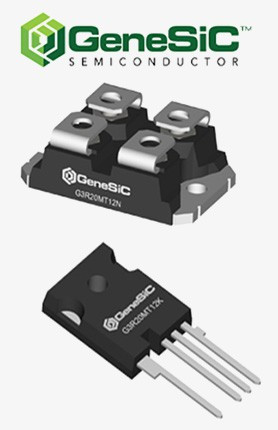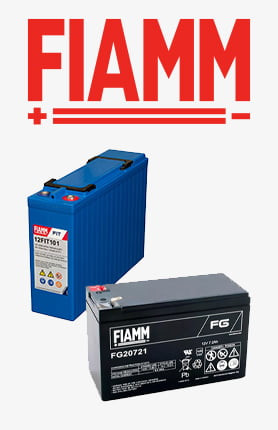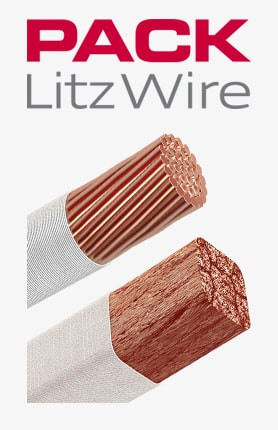trebuie să fii logat
-
întoarce-teX
-
Componente
-
-
Category
-
Semiconductoare
- Diode
- tiristoare
- Module izolate electric
- Redresoare în punte
-
Tranzistoare
- tranzistoare GeneSiC
- Module MOSFET Mitsubishi SiC
- Module MOSFET STARPOWER SiC
- Module MOSFET ABB SiC
- Module IGBT de la MITSUBISHI
- Module de tranzistori MITSUBISHI
- module MITSUBISHI MOSFET
- Module de tranzistori ABB
- Module IGBT de la POWEREX
- Module IGBT - de la INFINEON (EUPEC)
- Elemente semiconductoare din carbură de siliciu
- Accesați subcategoria
- Șoferii
- Blocuri de putere
- Accesați subcategoria
- Traductoare de curent și tensiune LEM
-
Componente pasive (condensatori, rezistențe, siguranțe, filtre)
- Rezistoare
-
Siguranțe
- Siguranțe miniaturale pentru sisteme electronice din seria ABC și AGC
- Siguranțe tubulare cu acțiune rapidă
- Inserții întârziate cu caracteristici GL/GG și AM
- Legături sigure ultra-rapide
- Siguranțe standard britanice și americane cu acțiune rapidă
- Siguranțe cu acțiune rapidă standard european
- Siguranțe de tracțiune
- Siguranțe de înaltă tensiune
- Accesați subcategoria
-
Condensatoare
- Condensatoare pentru motoare
- Condensatoare electrolitice
- Condensatori Icel Film
- Condensatoare de putere
- Condensatoare pentru circuite DC
- Condensatoare de compensare a puterii
- Condensatoare de înaltă tensiune
- Condensatoare pentru încălzire prin inducție
- Condensatoare de impulsuri
- Condensatoare DC LINK
- Condensatoare pentru circuite AC/DC
- Accesați subcategoria
- Filtre anti-interferențe
- Supercondensatoare
- Protecție la supratensiune
- Filtre de emisii revelatoare TEMPEST
-
Descărcător de supratensiune
- Descărcătoare de supratensiune pentru rețeaua de curent alternativ
- Descărcătoare de supratensiune pentru rețea de curent continuu
- Limitatoare de joasă tensiune ALVL
- Limitatoare de joasă tensiune PG
- Descărcătoare de trăsnet pentru rețele de curent alternativ până la 1000V
- Dispozitive de măsurare
- Accesați subcategoria
- Accesați subcategoria
-
Relee și Contactoare
- Teoria releelor și contactoarelor
- Relee cu stare solidă trifazată CA
- Relee cu stare solidă DC
- Regulatoare, sisteme de control și accesorii
- Porniri ușoare și contactoare inversoare
- Relee electromecanice
- Contactoare
- Comutatoare rotative
-
Relee cu stare solidă CA monofazate
- Relee cu stare solidă CA monofazate Seria 1 | D2425 | D2450
- Relee semifazate CA monofazate, seria CWA și CWD
- Relee semifazate CA monofazate seriile CMRA și CMRD
- Relee cu stare solidă CA monofazate Seria PS
- Relee cu stare solidă AC seria duble și cvadruple D24 D, TD24 Q, H12D48 D
- Relee monofazate din seria GN
- Relee cu stare solidă CA monofazate Seria CKR
- Relee monofazate pentru șină DIN AC SERIA ERDA și ERAA
- Relee AC monofazate pentru curent de 150A
- Relee duble cu stare solidă integrate cu radiator pe șină DIN
- Accesați subcategoria
- Relee cu stare solidă imprimabile monofazate CA
- Relee de interfață
- Accesați subcategoria
- Miezuri și alte componente inductive
- Radiatoare, Varistoare, Protectie termica
- Fani
- Aer conditionat, Accesorii tablou, Racitoare
-
Baterii, încărcătoare, surse de alimentare tampon și convertoare
- Baterii, încărcătoare - descriere teoretică
- Baterii litiu-ion. Baterii personalizate. Sistem de management al bateriei (BMS)
- baterii
- Incarcatoare de baterii si accesorii
- UPS și surse de alimentare tampon
- Convertoare si accesorii pentru fotovoltaice
- Stocarea energiei
- Pile de combustibil cu hidrogen
- Celule litiu-ion
- Accesați subcategoria
-
Automatizare
- Elevatoare Spiralift
- Piese pentru drone Futaba
- Întrerupătoare de limită, Micro întrerupătoare
- Senzori, traductoare
- Pirometre
- Contoare, relee de timp, contoare de panou
- Echipament industrial de protectie
- Semnale luminoase și sonore
- Cameră termică
- Afișaje LED
- Butoane și întrerupătoare
- Accesați subcategoria
-
Cabluri, fire Litz, Conduite, Conexiuni flexibile
- Firele
- Presetupe și manșoane
- Chipurile
-
Cabluri pentru aplicatii speciale
- Cabluri de prelungire și compensare
- Cabluri de termocuplu
- Cabluri de conectare pentru senzori PT
- Cabluri cu mai multe fire de temperatură. -60°C până la +1400°C
- Cabluri de medie tensiune SILICOUL
- Cabluri de aprindere
- Cabluri de incalzire
- Cabluri cu un singur conductor temp. -60°C până la +450°C
- Fire de cale ferată
- Cabluri de încălzire în ex
- Cabluri pentru industria de apărare
- Accesați subcategoria
- tricouri
-
Impletituri
- Impletituri plate
- Impletituri rotunde
- Impletituri foarte flexibile - plate
- Impletituri foarte flexibile - rotunde
- Impletituri cilindrice de cupru
- Impletituri si capace cilindrice din cupru
- Curele flexibile de împământare
- Impletituri cilindrice din otel zincat si inoxidabil
- Impletituri de cupru izolate PVC - temperatura de pana la 85 de grade C
- Impletituri plate din aluminiu
- Kit de conectare - impletituri si tuburi
- Accesați subcategoria
- Echipament de tracțiune
- Capse de cablu
- Sine flexibile izolate
- Sine flexibile multistrat
- Sisteme de management al cablurilor
- Accesați subcategoria
- Vezi toate categoriile
-
Semiconductoare
-
-
- Furnizori
-
Aplicații
- Automatizare HVAC
- Automatizare industrială
- Băncile de energie
- Cercetare si masuratori de laborator
- Componente pentru zonele cu pericol de explozie (EX)
- Echipament industrial de protectie
- Echipamente pentru dulapuri de distributie si control
- Exploatare minieră, metalurgie și turnătorie
- Imprimare
- Încălzire prin inducție
- Inginerie energetică
- Mașini CNC
- Masini de sudura si sudori
- Mașini de uscare și prelucrare a lemnului
- Masini pentru termoformarea materialelor plastice
- Măsurarea și reglarea temperaturii
- Motoare si transformatoare
- Surse de alimentare (UPS) și sisteme redresoare
- Tracțiune cu tramvai și feroviar
- Unități DC și AC (invertoare)
-
Instalare
-
-
Inductori
-
-
Dispozitive de inducție
-
-
Serviciu
-
- Kontakt
- Zobacz wszystkie kategorie
Basics of Electromagnetic Compatibility: What Is It and Why Is It Important? 4 of 8

Basics of Electromagnetic Compatibility: What Is It and Why Is It Important? 4 of 8
The issue of electromagnetic emission and immunity is a key aspect of Electromagnetic Compatibility (EMC).
Electromagnetic emission refers to the process in which electronic devices generate and emit unwanted electromagnetic signals into the environment. On the other hand, electromagnetic immunity refers to the impact of electromagnetic disturbances from external sources on the operation of electronic devices.
Electromagnetic emission can cause interference in nearby devices if they are not adequately resilient to these signals. Emission can occur due to various factors such as circuit switching, electrical impulses, oscillations, or inadequate shielding. It is essential for electronic devices to be designed with emission control in mind by applying appropriate design, shielding, and filtering techniques, as well as complying with EMC standards and regulations.
Electromagnetic immunity concerns the susceptibility of electronic devices to disturbances if they are not adequately protected from electromagnetic emission from other devices or the environment. Electromagnetic disturbances can affect the operation of electronic circuits, causing data transmission errors, operational instability, signal loss, or system failures. Therefore, conducting appropriate EMC tests to assess the resilience of devices to disturbances and adjusting the design to minimize their impact is crucial.
Managing electromagnetic emission and immunity is a significant aspect in the field of EMC. Proper design, testing, and application of EMC techniques allow for minimizing electromagnetic emission and reducing the impact of disturbances on electronic devices. Device owners should also ensure proper separation and shielding of devices to minimize the influence of external disturbances. All of these efforts contribute to ensuring reliable, safe, and efficient operation of electronic devices in various environments and applications.
Shielding and Electromagnetic Shielding are key techniques used to minimize electromagnetic disturbances in electronic devices.
Shielding refers to physically isolating electronic components or entire devices from the surrounding environment using appropriate shielding materials. Electromagnetic shielding aims to prevent the emission of unwanted electromagnetic signals into the environment and protect against external disturbances.
In practice, shielding involves using materials with high electromagnetic conductivity, such as metal enclosures, Faraday cages, or shielding foils. These materials have the ability to reflect or absorb electromagnetic signals, preventing their penetration outside or inside the device. Shielding can be applied at various levels, from the entire device enclosure to individual components, such as circuit boards, cables, or integrated circuits.
Electromagnetic shielding has several benefits. Firstly, it protects devices from undesired electromagnetic disturbances from the outside. It also shields the environment from electromagnetic emission generated by the devices, which is particularly important for medical devices or navigational systems. Additionally, shielding helps to comply with EMC standards and regulations regarding electromagnetic emission.
It is essential to design shielding properly to avoid gaps or openings that could allow electromagnetic signals to penetrate. Proper connection of shielding elements is also crucial to ensure continuity and effectiveness of shielding. Additionally, consideration of airflow, cooling, and other design aspects is necessary to ensure proper device operation.
Electromagnetic shielding is one of many techniques used to minimize electromagnetic disturbances. In combination with other techniques such as filtering, damping, or proper cable layout, shielding contributes to providing high-quality signals, device reliability, and compliance with EMC requirements. It is worth emphasizing that shielding should be considered in the early stages of device design to guarantee its effectiveness and efficiency in eliminating electromagnetic disturbances.
Absorption and Damping of Electromagnetic Disturbances are key techniques used to minimize the impact of disturbances on electronic devices.
These techniques aim to reduce the emission and immunity of unwanted electromagnetic signals, contributing to ensuring reliable device operation. Here are a few examples of electromagnetic absorption and damping techniques:
- Absorbing Materials: The use of absorbing materials aims to absorb and convert electromagnetic energy into other forms of energy, such as heat. These materials have the ability to absorb electromagnetic signals that are unwanted or generate disturbances. Examples of absorbing materials include ferrite magnetic materials, carbon foam, or conductive polyurethane foams.
- Electromagnetic Shielding: Electromagnetic shielding, which has been described earlier, is also a technique for damping electromagnetic disturbances. By using shielding materials such as metal enclosures or shielding foils, electromagnetic disturbances are reflected or absorbed, preventing their penetration outside or inside the device. This effectively reduces the impact of disturbances on device operation.
- EMC Filters: EMC filters are used to reduce unwanted electromagnetic signals. These filters are placed in electronic circuits and serve to filter out electromagnetic disturbances in specific frequency ranges. Filters can be passive (resistive, capacitive, inductive) or active (using integrated circuits). Their task is to eliminate disturbances or prevent them from penetrating other parts of the circuit.
- Circuit Design: Proper electronic circuit design can also help in damping electromagnetic disturbances. Consideration should be given to the arrangement of components, conductors, and the minimization of the length of signal paths to reduce inductive and capacitive effects that can generate disturbances. Proper use of shielding, grounding, and cable layout in accordance with EMC principles is also crucial for damping disturbances.
Absorption and damping of electromagnetic disturbances are key techniques in the field of EMC. The use of appropriate materials, filters, and design techniques allows for the reduction of electromagnetic disturbances, improvement of device reliability, and compliance with EMC requirements. The application of these techniques is particularly important for devices that are susceptible to disturbances or operate in environments where strong electromagnetic fields are present.
Designing and laying out circuits are crucial elements in ensuring Electromagnetic Compatibility (EMC) of electronic devices.
Proper circuit design and layout aim to minimize electromagnetic interference emissions and ensure immunity to external interferences. Here are some key aspects of circuit design and layout related to EMC:
Miniaturization of Signal Traces: Long signal traces act as antennas that can capture and emit electromagnetic interference. Therefore, it is essential to minimize the length of signal traces, especially those carrying high-frequency signals. Shortening the signal traces reduces potential electromagnetic fields and minimizes the risk of emissions of interference.
Proper Component Placement: Circuit design should consider the appropriate placement of components to avoid inductive and capacitive effects that may generate interference. It is essential to avoid placing components that generate or are sensitive to electromagnetic interference in close proximity. Also, placing components in accordance with EMC principles can help minimize emissions and susceptibility to interference.
Proper Grounding and Shielding: Grounding is a critical aspect of circuit design for ensuring EMC. Proper grounding ensures the proper flow of currents, minimizes potential differences, and protects against electromagnetic interferences. Additionally, the use of electromagnetic shielding, such as metal enclosures or shielding foils, can effectively limit the emission and ingress of electromagnetic interference.
Filtering and Damping: Incorporating appropriate filters and damping elements in electronic circuits can help eliminate unwanted electromagnetic interferences. EMC filters are used to filter out interferences within specific frequency ranges, while damping elements can reduce the impact of interferences on circuit operations. The selection and placement of these elements should be tailored to the specific requirements of the application.
Proper circuit design and layout to ensure Electromagnetic Compatibility are incredibly important. Considering the above aspects allows for the minimization of electromagnetic interference emissions, ensures the reliability of device operation, and compliance with EMC standards. It is important to remember that circuit design and layout should be carried out in the early stages of the design process to effectively address EMC requirements and avoid costly revisions later on.
Related posts
 Now available – DC/DC converters from PREMIUM
Now available – DC/DC converters from PREMIUM
 New release in DACPOL lighting for lathes – Kira covers
New release in DACPOL lighting for lathes – Kira covers




Leave a comment